carbon dioxide removal
description: process in which carbon dioxide gas (CO2) is removed from the atmosphere by deliberate human activities and durably stored in geological, terrestrial, or ocean reservoirs, or in products
27 results

Escape From Model Land: How Mathematical Models Can Lead Us Astray and What We Can Do About It
by
Erica Thompson
Published 6 Dec 2022
The IPCC uses Integrated Assessment Models which represent the energy and climate systems and project carbon emissions to the end of this century, based on large-scale use of ‘carbon dioxide removal’, ways of capturing carbon from the atmosphere and storing it separately, which at the time of writing are still at the demonstration stage. That’s OK – in fact, a model that shows how effective a can opener could be may stimulate us to look for the can opener or to try to develop one from the materials available, and self-evidently it would be a good thing to have such a tool. I very much hope that carbon dioxide removal at scale is possible and sufficiently cheap. One problem, which McLaren and Markusson have highlighted, is the possibility that the can opener does not exist or cannot be developed, and in that case the danger, like in the joke, is that taking the assumption too literally may discourage pursuit of necessary alternative strategies.
…
One problem, which McLaren and Markusson have highlighted, is the possibility that the can opener does not exist or cannot be developed, and in that case the danger, like in the joke, is that taking the assumption too literally may discourage pursuit of necessary alternative strategies. The carbon dioxide removal can opener is part of an answer to one scenario question that energy system modellers have been asked: if we have achieved a stabilisation and reduction of atmospheric greenhouse gas levels by the end of the century, how could it have happened? Carbon dioxide removal is certainly one answer to that question, perhaps the only answer that can be sufficiently easily encoded in energy system models and perhaps the only answer that is currently politically acceptable.
…
But this single answer is now enshrined in models that purport to ‘optimise’ outcomes and offer tautological policy conclusions such as ‘All pathways that limit global warming to 1.5˚C with limited or no overshoot project the use of carbon dioxide removal on the order of 100–1000 GtCO2 over the 21st century.’ Of course they do, because the inclusion of this technology in the model at a certain (arbitrarily chosen) price point guarantees that it will be used in preference to any nominally more expensive way of reducing emissions. You could set the price point at any level in order to get exactly the use of carbon dioxide removal that you deem to be the right amount. The makers of these models have decided that the right amount is quite a lot, so that’s what we get, and the results are used to argue that emissions can continue to rise because our children will be able to take the carbon out of the atmosphere later.

Under a White Sky: The Nature of the Future
by
Elizabeth Kolbert
Published 15 Mar 2021
To stave off 1.5°C, they’d have to drop most of the way toward zero within a single decade. This would entail, for starters: revamping agricultural systems, transforming manufacturing, scrapping gasoline- and diesel-powered vehicles, and replacing most of the world’s power plants. Carbon dioxide removal offers a way to change the math. Extract large amounts of CO2 from the atmosphere and “negative emissions” could, conceivably, balance out the positive variety. It might even be feasible to cross the threshold of catastrophe and then suck enough carbon out of the air to keep calamity at bay, a situation that’s become known as “overshoot
…
The company got as far as building a small prototype, but just as it was looking for new investors, the financial crisis of 2008 hit. “Our timing was exquisite,” Lackner told me. Unable to raise more funds, the company folded. Meanwhile, fossil-fuel consumption continued to rise, and along with it, CO2 levels. Lackner came to believe that, unwittingly, humanity had already committed itself to carbon dioxide removal. “I think that we’re in a very uncomfortable situation,” he told me. “I would argue that if technologies to pull CO2 out of the environment fail, then we’re in deep trouble.” * * * — Lackner founded the Center for Negative Carbon Emissions at ASU in 2014. Most of the equipment he dreams up is put together in a workshop a few blocks from his office.
…
India, which is expected soon to overtake China as the world’s most populous nation, is responsible for about three percent. All the nations of Africa and all the nations of South America put together are responsible for less than six percent. For the world to have a two-thirds chance of staying under 2°C without carbon dioxide removal, CO2 emissions would have to fall to zero within the next several decades. To stay under 1.5°C, emissions would have to fall much faster. To get to zero, everyone would have to stop emitting—not only Americans and Europeans and Chinese, but also Indians and Africans and South Americans.

What If We Get It Right?: Visions of Climate Futures
by
Ayana Elizabeth Johnson
Published 17 Sep 2024
Kate: Hundreds, maybe even thousands of years. But when we talk about carbon dioxide removal, there is a justifiable fear that it is going to create a moral hazard, that it’s going to be used to justify continued burning of fossil fuels. Ayana: That’s not gonna work. Kate: No, because when we talk about carbon dioxide removal solutions, those are limited by physics. In order to separate out what is essentially a very powerful but trace gas in the atmosphere takes energy. There is simply not unlimited energy to do that. So when we talk about getting it right, we have to think about carbon dioxide removal in terms of removing what is already there, as opposed to allowing it to compensate for future emissions.
…
It weighs more than everything we have ever built. It’s just incredible. In order to take that out, we are going to have to have a conversation about artificial carbon dioxide removal. That essentially means building machines that suck CO2 out of the atmosphere (aka artificial trees). Or “rock weathering,” which is spreading rock dust over cropland to enhance the geological carbon cycle, taking more CO2 out of the atmosphere. There is a whole realm of interesting scientific carbon dioxide removal solutions. This goes back to the What if we get it right? question. Getting it right means we stop using fossil fuels. We stop destroying forests, but we also remove CO2 from the atmosphere.
…
We’ll need fusion to work by 2100. I mean, the human experiment continues, right? We’re going to need more energy to do all the things that we want to do. Hell, one day we might even decide to go to Mars. Ayana: Let’s not put that at the top of the priorities list. What role do you see for carbon dioxide removal technologies as a way to get some of that stuff out of the atmosphere that’s already there? Jigar: There are three major carbon removal processes that we have now. I’ll go through them briefly because people confuse them. First, there’s the method for sequestering the pure stream of CO2 exhaust produced by manufacturing ammonia, ethanol, and natural gas.

The Climate Book: The Facts and the Solutions
by
Greta Thunberg
Published 14 Feb 2023
Nobre, Julia Arieira and Nathália Nascimento The Amazon basin encompasses the largest area of rainforest in the world – almost 6 million square kilometres. A critical element of the Earth’s climate system, it plays a vital role in global water cycles and regulating climate variability. The Amazon forest is responsible for an estimated 16 per cent of the carbon dioxide removed every year from the atmosphere through photosynthesis, helping store 150–200 billion tonnes of carbon in soil and vegetation. In addition, through evapotranspiration – the forest’s capture and release of water into the atmosphere – it works as a giant air-conditioner, lowering land surface temperatures and generating rainfall.
…
The simple mathematics of the climate system seen through the ‘carbon budget’ means we can use fossil fuels only for a few more decades, until around 2050, unless technologies are developed to avoid emitting the CO2 produced by using fossil fuels (carbon capture and storage) or to take the CO2 back out of the atmosphere (carbon dioxide removal). Both these technologies have so far failed to deliver. And, since fossil fuel power plants or industrial facilities can have lifetimes of fifty years or more, this means that new fossil fuel infrastructure being built today (or in the recent past) in middle- and low-income countries will need to be retired before it reaches its end of life.
…
Its proponents seek instead to reduce the warming effects of the sun, either by reflecting some of its radiation back into space or by removing carbon dioxide from the atmosphere and somehow storing it. Solar geoengineering includes widely contested proposals to fly fleets of aeroplanes around the globe to continuously spray large quantities of sun-blocking aerosols into the stratosphere, or to cover extensive areas of Arctic ice with glass beads. Carbon dioxide removal at geoengineering scale includes suggestions to fertilize swathes of the ocean to cause massive algal blooms, or to convert enormous land areas to tree plantations with the intention of burning the wood and capturing the CO2. All geoengineering approaches involve huge risks, some to the point of threatening both ecosystem and societal breakdown.

The End of Doom: Environmental Renewal in the Twenty-First Century
by
Ronald Bailey
Published 20 Jul 2015
The National Academy of Sciences: Committee on Geoengineering Climate: National Research Council, Climate Intervention: Reflecting Sunlight to Cool the Earth, February 2015, National Academy of Sciences Press, 234 pp. www.nap.edu/catalog/18988/climate-intervention-reflecting-sunlight-to-cool-earth; and Committee on Geoengineering Climate: National Research Council, Climate Intervention: Carbon Dioxide Removal and Reliable Sequestration, National Academy of Science Press, February 2015, 140 pp. www.nap.edu./catalog/18805/climate-intervention-carbon-dioxide-removal-and-reliable-sequestration. bioenergy carbon capture and storage: Elmar Kriegler et al., “Is Atmospheric Carbon Dioxide Removal a Game Changer for Climate Change Mitigation?” Climatic Change 118.1 (May 2013): 45–57. link.springer.com/article/10.1007%2Fs10584-012-0681-4. Another proposal is direct air capture: Klaus Lackner et al., “The Urgency of the Development of CO2 Capture from Ambient Air.”
…
Scientific research and engineering development should be divorced from moral posturing and policy prescription.” The National Academy of Sciences released two reports in February 2015 endorsing research into geoengineering strategies that could be deployed to counteract man-made global warming. One is Climate Intervention: Reflecting Sunlight to Cool the Earth and the other is Climate Intervention: Carbon Dioxide Removal and Reliable Sequestration. The NAS reports argue that both should be pursued. One proposal involves injecting sulfur particles into the stratosphere, where they would reflect sunlight back into space, thus cooling the planet. There has already been one recent natural experiment that proved this idea could work.
…
To reduce future temperatures by 1.9°C, 1,881 vessels would have to be deployed at a cost of $5.8 billion annually. Some IPCC pathways toward stabilizing the amount of carbon dioxide in the atmosphere explicitly incorporate the development of new technologies that can suck carbon dioxide out of the atmosphere. One such carbon dioxide removal proposal is called bioenergy carbon capture and storage; this involves cultivating plants to absorb carbon dioxide as they grow and then use them as fuel to produce energy. When the plants are burned, the carbon emissions are captured and buried, resulting in negative emissions. Another proposal is direct air capture, a possibility offered by Columbia University researcher Klaus Lackner; this involves using a specific resin that absorbs atmospheric carbon dioxide a thousand times more efficiently than trees do to capture the gas and then store it underground.

Climate Change
by
Joseph Romm
Published 3 Dec 2015
The term is so ill-defined and potentially misleading that the U.S. National Academy of Sciences decided to reject the term “geoengineering” entirely and split its comprehensive peer-reviewed 2015 report on the subject into two: a 235-page report on “Carbon Dioxide Removal and Reliable Sequestration” and a 141-page report on “Reflecting Sunlight.” “Carbon dioxide removal” covers everything that could permanently take carbon dioxide out of the air—from reforestation to direct capture of carbon dioxide from the air. “Reflecting Sunlight,” covers the more exotic climate-altering strategies to increase the reflectivity (albedo) of the Earth.
…
Likewise, although many scientists have been referring to the reflecting sunlight strategies as “solar radiation management,” the academy authors reject that in favor of “albedo modification” because, again, “management” implies a level of control of the outcome that the committee does not believe we have. The basic conclusion of the report on carbon dioxide removal strategies is that they are relatively safe, but they are currently unaffordable and hard to scale up to the level needed to remove and dispose of billions of tons of carbon dioxide. The basic conclusion of the albedo modification report is that one or two of those strategies might be affordable, but they are dangerously flawed.
…
That is the same conclusion as a 2009 assessment by the UK Royal Society, which found “Geoengineering methods are not a substitute for climate change mitigation.” Capturing carbon dioxide from coal plants and storing it permanently is currently very expensive, as I will discuss in Chapter Six. However, the Carbon Dioxide Removal (CDR) strategies the Academy looked at are more expensive than extracting the carbon dioxide from coal burning (which does not count as CDR itself because you are not removing net carbon dioxide from the air with carbon capture and storage at a coal plant, you are just not adding new carbon dioxide into the air).

Nomad Century: How Climate Migration Will Reshape Our World
by
Gaia Vince
Published 22 Aug 2022
North America and Europe have 300 million people above the traditional retirement age (65+), and by 2050 the economic old-age dependency ratio there is projected to be at forty-three elderly persons per 100 working persons aged 20–64.1 Cities from Munich to Buffalo will begin competing with each other to attract migrants. This competition will become especially acute towards the end of the century, when some of the southern places made uninhabitable by climate change may become once again liveable through geoengineering innovations that reduce global or regional temperatures, through carbon dioxide removal and technological interventions that can cool large areas cheaply. Truly, this is the century of unprecedented, planetary human movement. We need to plan pragmatically now, adopting a species-wide approach to ensure our human systems and communities have the resilience to weather the shocks to come.
…
This process absorbs around 0.3 per cent of our carbon emissions, but by enhancing it, we could dramatically improve on this. Some rocks are better than others. Silicate rocks, such as basalt or olivine, which are common on the Earth’s surface, can be crushed into a highly reactive powder that can be spread on agricultural fields, where plant roots and microbes in the soil speed up the carbon dioxide removal. The powder is also an excellent way to add minerals to soils, boosting nutrient levels,11 improving crop yields and helping restore degraded agricultural land. Silicate rocks also improve the health of crops, and protect them from pests and diseases. Since enhanced weathering makes water more alkaline, it can help counteract the acidification of soils through the overuse of fertilizers – farmers often add limestone to soils for this purpose, but silicates could be used instead.
…
Even if it were successfully deployed at scale, and carbon dioxide concentrations significantly reduced, there is a further issue: the oceans might respond by returning some of their carbon dioxide back into the atmosphere. Carbon dioxide is in constant flux between the atmosphere and oceans, and no one knows how this new disturbance to the equilibrium would play out, but scientists calculate that as much as one-fifth of carbon dioxide removed by DAC could be replaced by ocean release.16 Nevertheless, it is essential we try direct air capture at scale, as part of our increasingly hopeless quest to stay below 2°C temperature rise. Concerningly, all of the official road maps to net zero by 2050 rely heavily on one or both of BECCS or DAC – neither of which has been proven at scale.

The Planet Remade: How Geoengineering Could Change the World
by
Oliver Morton
Published 26 Sep 2015
But the Concert makes it clear that it doesn’t want emissions to go unchecked. It wants other nations to commit, as its members have, to quite steep cuts in emissions. And it is happy to welcome to its ranks nations that make such commitments, especially if they also commit to the development and deployment, over time, of technologies for carbon-dioxide removal. As new members of the Concert, those acceding nations get a say in decisions about revisions to the veilmaking plan in view of new monitoring data and new understanding of the earthsystem – the original Concert members are aware that they started with inadequate monitoring and sketchy knowledge, and are keen to reduce the risks that brought with it – as well as revisions that might be required by new trends in the politics of emission.
…
But the oceans are not altered beyond recognition, or beyond the use of fish farmers, who produce most of the protein humans get from them. In some particularly sensitive areas liming programmes designed to reduce the effects of the decreased alkalinity – programmes related to some of the more successful efforts at carbon dioxide removal – are having some success, though at significant expense. In other places, due sometimes to poor implementation and sometimes to unforeseen circumstances, they have failed. The higher carbon-dioxide level is having effects on land, too. Helped along by attempts to produce a more powerful West African monsoon using cloudships in the Gulf of Guinea, the vegetation of the Sahel is spreading north, and there are hopes that large parts of the Sahara may yet be reclaimed.
…
The Holocene Saharan tipping point is discussed in Liu et al. (2006) and Claussen (2009); a sense of life on the shores of Lake Megachad in the early-to-mid-Holocene can be found in Broodbank (2014). For the Sahara terraformed by brute-force desalination and irrigation, see Ornstein, Aleinov and Rind (2009). Chapter Nine: Carbon Present, Carbon Future For an overview of all proposed carbon-dioxide-removal technologies, see McClaren (2012). For a technical account of CCS, see Wilcox (2012). Sea-water approaches are described in Caldeira and Rau (2000) and Rau (2011). Ocean iron-fertilization experiments are reviewed in Boyd et al. (2007) and Williamson et al. (2012); see also Kunzrig and Broecker (2008), Kintisch (2010) and Goodell (2010).

The Precipice: Existential Risk and the Future of Humanity
by
Toby Ord
Published 24 Mar 2020
These techniques are often called geoengineering. While the name conjures up a radical and dangerous scheme for transforming our planet, the proposals in fact range from the radical to the mundane. They also differ in their cost, speed, scale, readiness and risk. The two main approaches to geoengineering are carbon dioxide removal and solar radiation management. Carbon dioxide removal strikes at the root of the problem, removing the carbon dioxide from our atmosphere and thus taking away the source of the heating. It is an attempt to cure the Earth of its affliction. At the radical end is ocean fertilization: seeding the ocean with iron to encourage large algal blooms which capture carbon before sinking into the deep ocean.
…
This could involve blocking light before it hits the Earth, reflecting more light in the atmosphere before it hits the surface, or reflecting more of the light that hits the surface. It is an attempt to offset the warming effects of the carbon dioxide by cooling the Earth. It is typically cheaper than carbon dioxide removal and quicker to act, but has the downsides of ignoring other bad effects of carbon (such as ocean acidification) and requiring constant upkeep. A central problem with geoengineering is that the cure may be worse than the disease. For the very scale of what it is attempting to achieve could create a risk of massive unintended consequences over the entire Earth’s surface, possibly posing a greater existential risk than climate change itself.

How to Spend a Trillion Dollars
by
Rowan Hooper
Published 15 Jan 2020
This itself comes in three flavours: a biological or natural kind, which usually means planting more trees, or growing more plants in the ocean; a technological kind, which means extracting carbon dioxide from the air and burying it underground forever; and a hybrid techno-natural way, which means growing plants for fuel and then catching and burying the carbon dioxide produced when the fuel is burned. As with solar geoengineering, we don’t yet know if this ‘negative emissions’ technology of carbon dioxide removal will work well enough at scale, or be cost-effective. However, just the idea that negative emissions might one day work on a significant scale justifies the Intergovernmental Panel on Climate Change (IPCC) in its claim that we may be able to limit warming to 2 or even 1 degrees. As well as the massive emissions cuts that the IPCC models say we need to make, we also need to start capturing and storing carbon dioxide in vast amounts.
…
One of the less-known details of international climate agreements, and of the IPCC scenarios for future warming, is that many of the predictions for temperature rises assume that by the second half of this century we will start removing large quantities of carbon dioxide from the atmosphere. This is known both as CDR – carbon dioxide removal – and NET, negative emissions technologies. The big problem is that we can’t do this yet at any kind of scale to make a difference. For all its world-changing power, carbon dioxide is a trace gas, making up just 0.04 per cent of the atmosphere. That makes it very difficult to get out. We currently have ways to do it, but only on a small scale: we need to do it on a planetary scale, without adding to the carbon dioxide already emitted.

Endurance: A Year in Space, a Lifetime of Discovery
by
Scott Kelly
and
Margaret Lazarus Dean
Published 14 Aug 2017
I felt that NASA should be thinking of it the same way. When I prepared for my first flight on the ISS, I got acquainted with a new carbon dioxide removal system. The lithium hydroxide cartridges were foolproof and reliable, but that system depended on cartridges that were to be thrown away after use—not very practical, since hundreds of cartridges would be required to get through a single six-month mission. So instead we now have a device called the carbon dioxide removal assembly, or CDRA, pronounced “seedra,” and it has become the bane of my existence. There are two of them—one in the U.S. lab and one in Node 3.

Moon Rush: The New Space Race
by
Leonard David
Published 6 May 2019
In transit to the Moon, Lovell later recalled, he looked out the window and saw oxygen escaping from the spacecraft’s rear. He and his crewmates were in serious trouble. “Houston, we’ve had a problem,” he famously reported. Tackling the serious threats caused by the vessel’s inadequate power levels, loss of cabin heat, and the critical need to cobble together a carbon dioxide removal system, the crew returned safely to Earth, splashing down in the South Pacific Ocean. “The flight was a failure in its initial mission,” Lovell said, but he granted that it was “a tremendous success in the ability of people to get together, like the mission control team working with what they had and working with the flight crew to turn what was almost a certain catastrophe into a successful recovery.”

The Vanishing Face of Gaia: A Final Warning
by
James E. Lovelock
Published 1 Jan 2009
This fundamentally important sink for carbon dioxide was until about 1980 considered by Earth scientists to be purely chemical. We now know that the presence of organisms – from bacteria and algae on the rock faces to trees growing in the soil – makes a three‐ to tenfold increase in rock weathering and carbon dioxide removal. It is fundamentally important for keeping the Earth cool and as part of Gaia’s self‐regulation. SYSTEM Webster’s New Collegiate Dictionary defines a system as ‘an assemblage of objects united by some form of regular interaction or interdependence’. Like the solar system, the nervous system or the operating system of your computer, this is the sense in which I use the word ‘system’ in this book.
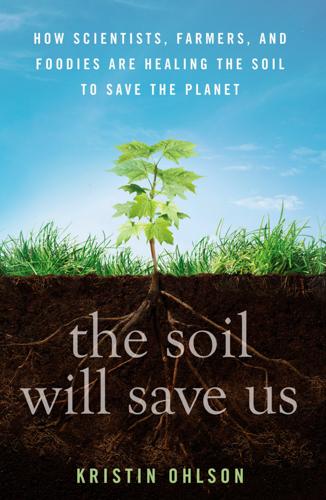
The Soil Will Save Us
by
Kristin Ohlson
Published 14 Oct 2014
“The carbon in the soil is like a cup of water,” Lal says. “We have drunk more than half of it, but we can put more water back in the cup. With good soil practices, we could reverse global warming.” When good land management practices create a ton of carbon in the soil, that represents slightly more than 3 tons of carbon dioxide removed from the atmosphere. Lal believes that 3 billion tons of carbon can be sequestered annually in the world’s soils, reducing the concentration of carbon dioxide in the atmosphere by 3 ppm every year. But others with whom I spoke—especially as I got further and further from academia—are far more optimistic about the potential for change.
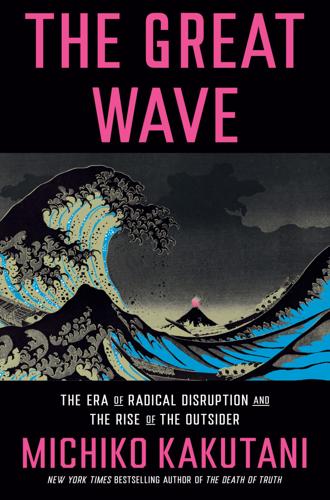
The Great Wave: The Era of Radical Disruption and the Rise of the Outsider
by
Michiko Kakutani
Published 20 Feb 2024
Lowering fossil fuel emissions to bring greenhouse gases under control will require a huge global push: It will require serious international cooperation, the cancellation of coal and oil drilling projects, and massive public and private investment in clean energy and new technologies like carbon dioxide removal. But while the “climate time bomb is ticking,” the UN report also stresses that the world possesses tools to grapple with the crisis, and a viable, if ever narrowing, window in which to make crucial changes. “The choices and actions implemented in this decade,” the report reads, “will have impacts now and for thousands of years.”
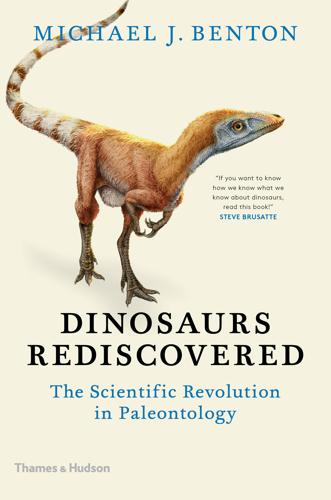
Dinosaurs Rediscovered
by
Michael J. Benton
Published 14 Sep 2019
Physical environmental causes D.Terrestrial explanations D1.Climatic change 01.Climate became too hot as a result of high levels of carbon dioxide in the atmosphere, and the ‘greenhouse effect’; extinction was caused by the high temperature and increased aridity [1946], which either inhibited spermatogenesis [1945], unbalanced the male:female ratio of hatchlings [1982], killed off juveniles [1949], or led to overheating in summer, especially if the dinosaurs were warm-blooded [1978] 02.Climate became too cold, and this led to extinction because it was too cold for embryonic development [1929], because the endothermic dinosaurs lacked insulation and could not maintain a constant body temperature [1965], and they were also too large to hibernate [1967], or, even if they were warm-blooded, the cold winter temperatures finished them off [1973] 03.Climate became too dry [1946] 04.Climate became too wet 05.Reduction in climatic equability and increase in seasonality [1968] D2.Atmospheric change 01.Changes in the pressure or composition of the atmosphere (e.g. excessive amounts of oxygen from photosynthesis) [1957] 02.High levels of atmospheric oxygen, leading to fires following an extraterrestrial impact [1987] 03.Low levels of carbon dioxide, removing the ‘breathing stimulus’ of dinosaurs [1942] 04.Excessively high levels of carbon dioxide in the atmosphere and asphyxiation of dinosaur embryos in the eggs [1978] 05.Extensive volcanism and the production of volcanic dust 06.Poisoning by selenium from volcanic lava and dust [1967] 07.Toxic substances in the air, possibly produced from volcanoes, which caused thinning of dinosaur egg shells [1972] D3.Oceanic and topographic change 01.Sea level fall and drying of continental interiors [1964] 02.Lowering of global sea level leading to dinosaur extinction, on the assumption that they were underwater organisms [1949] 03.Floods 04.Mountain building, for example, the Laramides in North America [1921] 05.Drainage of swamp and lake habitats [1939] 06.Stagnant oceans caused by high levels of carbon dioxide [1983] 07.Loss of oxygen on the sea bed at start of sea level advance [1984] 08.Spillover of Arctic water (fresh) from its formerly enclosed condition into the oceans, which led to reduced temperatures worldwide [1978] 09.Reduced topographic relief, and reduction in terrestrial habitats [1968] D4.Other terrestrial catastrophes 01.Eruption of the Deccan Traps [1982] 02.Fluctuation of gravitational constants 03.Shift of the Earth’s rotational poles 04.Extraction of the moon from the Pacific Basin and consequent world perturbation 05.Poisoning by uranium sucked up from the soil [1984] E.Extraterrestrial explanations 01.Entropy; increasing chaos in the universe and hence loss of large organized life forms 02.Sunspots 03.Cosmic radiation and high levels of ultraviolet radiation [1928] 04.Destruction of the ozone layer by solar flares, letting in ultraviolet radiation [1954] 05.Ionizing radiation [1968] 06.Electromagnetic radiation and cosmic rays from the explosion of a nearby supernova [1971] 07.Interstellar dust cloud [1984] 08.Flash heating of atmosphere by entry of meteorite [1956] 09.Oscillations about the galactic plane [1970] 10.Impact of an asteroid, a comet, or comet showers (Luis Alvarez and colleagues, 1980) Further Reading Author’s note Publications marked with an asterisk (*) provide easy introductions to the topic, and should be consulted first.

Less Is More: How Degrowth Will Save the World
by
Jason Hickel
Published 12 Aug 2020
The maximum decarbonisation rate assumed in best-case scenario models is 4% per year. For a review of relevant literature, see Hickel and Kallis, ‘Is green growth possible?’ 16 Christian Holz et al., ‘Ratcheting ambition to limit warming to 1.5 C: trade-offs between emission reductions and carbon dioxide removal,’ Environmental Research Letters 13(6), 2018. 17 The IPCC’s 2018 report has only one scenario for staying under 1.5°C without using BECCS. It works by relying on a significant reduction of energy and material use. The underlying paper is Grubler et al., ‘A low energy demand scenario for meeting the 1.5°C target.’

There Is No Planet B: A Handbook for the Make or Break Years
by
Mike Berners-Lee
Published 27 Feb 2019
This is why renewable energy generation is often measured in ‘tonnes of oil equivalent’ – in other words the tonnes of oil that would be required to generate the same amount of electricity. BP uses an efficiency factor of just 38% for coal and oil power stations. Gas turbines are significantly more efficient. 31 Potential and costs of carbon dioxide removal by enhanced weathering of rocks. Environmental Research Letters [doi:10.1088/1748-9326/aaa9c4] (open access),Jessica Strefler, Thorben Amann, Nicolas Bauer, Elmar Kriegler and Jens Hartmann (2018) (https://preview.tinyurl.com/ rockweatherring). Thanks also to Chris Goodall and his excellent weekly Carbon Commentary newsletter for this.

Whole Earth Discipline: An Ecopragmatist Manifesto
by
Stewart Brand
Published 15 Mar 2009
Geoengineers gathered in cautionary mode at the Asilomar Conference Center in California, echoing the recombinant DNA gathering there back in 1975. Environmental organizations were invited, and so was I. The conference adopted terminology from an influential report by the Royal Society, noting that geoengineering comes in two major forms—solar radiation management (SRM) and carbon dioxide removal (CDR). The view emerged that carbon dioxide projects would necessarily be slow and in most cases benign and therefore in less need of global regulation, but the opposite is true of efforts to manage sunlight with stratospheric sulfur dust or brightened clouds. The three days of discussion basically reaffirmed the “Oxford Principles” first proposed in a 2009 memorandum to the British Parliament by Steve Raynor from Oxford University:• Geoengineering regulated as a public good • Public participation in geoengineering decision-making • Disclosure of geoengineering research and open publication of results • Independent assessment of impacts • Governance before deployment In other words, one way to geoengineer wrong would be for a private company to start injecting sulfur dioxide into the stratosphere without disclosing research plans or research results, without outside monitoring of effects, and without permission of a public governance body.

Bringing Columbia Home: The Untold Story of a Lost Space Shuttle and Her Crew
by
Michael Leinbach
and
Jonathan H. Ward
Published 23 Jan 2018
This would not have been solely a NASA decision. President Bush would have needed to be involved in the process, and there would have been very little time for debate. Columbia’s crew would have been told to shut down all noncritical activity on the ship and sleep extended hours to prolong the cabin’s carbon dioxide removal capability while awaiting the rescue. They would also close down the Spacehab module, effectively ending Columbia’s science mission. Meanwhile, the rescue mission crew would rehearse procedures in Houston for rendezvousing with Columbia and transferring her crew to Atlantis. At KSC, a “full court press” of round-the-clock activity would put Atlantis on the launchpad no earlier than January 31.
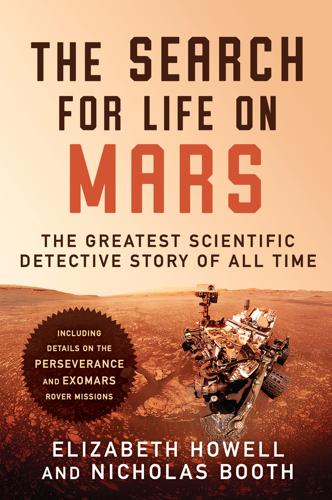
The Search for Life on Mars
by
Elizabeth Howell
Published 14 Apr 2020
Water also was a very potent contributor to greenhouse warming, either in the form of vapor, or as lakes or seas on the surface. All helped trap sunlight more efficiently. Geological evidence suggests that volcanism may have been episodic. If so, carbon dioxide could have been released to periodically “top up” the warming, perhaps for as long as a billion years or so. As Martian volcanism died down, carbon dioxide removal would have been greater than its replacement. The planet would have been warmer only at its equator and in the lowest regions where the atmosphere was densest. Whatever water was around would have effectively dissipated along with the atmosphere. But this loss may also have been gradual and could have taken place in distinct cycles of climate change.

A City on Mars: Can We Settle Space, Should We Settle Space, and Have We Really Thought This Through?
by
Kelly Weinersmith
and
Zach Weinersmith
Published 6 Nov 2023
Third, and perhaps most important, if Martians can’t maintain Earth support after independence, they will probably die. A life-support specialist we spoke to told us that the ISS experiences a breakdown of something once every four or five months that requires new equipment to be sent up for repairs. Examples include the toilet and the Carbon Dioxide Removal Assembly—both things you’d really like to keep in tip-top shape. The number of Martians and Martian industries needed to probably not die is a matter we’ll discuss later, but suffice it to say that a declaration of independence is a long cry from actual, functional independence. Even if we believed cutting the cord with Earth were desirable or legally allowed, it’s not technologically possible, and won’t be anytime soon.

Connectography: Mapping the Future of Global Civilization
by
Parag Khanna
Published 18 Apr 2016
From meteor strikes to the ice ages, geophysical phenomena have profoundly shaped mankind. The fundamental geology of plate tectonics is always in motion, with earthquakes and tsunamis constantly shifting coastlines. But mankind is fighting back with technologies such as land reclamation, sea barriers, and earthquake resistant architecture. Geo-engineering techniques such as carbon dioxide removal and solar radiation management may even allow us to slow climate change. Map 38, corresponding to this chapter, appears in the map insert. But technological prowess and resource abundance should not lead to hubris. Anthropologists such as Jared Diamond have asserted that the Rapa Nui people of Easter Island committed ecological suicide through rapid deforestation (using trees to transport their massive stone statues known as moai) and the resulting soil erosion that made the island agriculturally unsustainable.

Corporate Warriors: The Rise of the Privatized Military Industry
by
Peter Warren Singer
Published 1 Jan 2003
With the discovery of some of the world's richest oilfields under the North Sea and in the Middle East, Halliburton's drilling support operations went through a period of spectacular growth. Likewise, Brown & Root soon ranked as the largest engineering and construction firm in the United States. It also played a critical role in the NASA space program, including devising the ingenious makeshift carbon dioxide removal system that saved the lives of the Apollo 13 crew (featured in the film of the same name). By 1979. Brown & Root had expanded to 80,000 employees and Halliburton had another 100,000. However, at the end of the 1970s, a lingering recession and the weakening of the oil market caused much trauma to both companies.

Adventures in the Anthropocene: A Journey to the Heart of the Planet We Made
by
Gaia Vince
Published 19 Oct 2014
‘California’s Redwoods May be Benefiting From Climate Change’, Science | KQED Public Media for Northern CA, at http://blogs.kqed.org/science/2013/08/14/californias-redwoods-may-be-benefiting-from-climate-change/. 20.Pross, J. et al., ‘Persistent near-tropical warmth on the Antarctic continent during the early Eocene epoch’, Nature 488 (2012), 73–7. 21.Cao, L., & Caldeira, K., ‘Atmospheric carbon dioxide removal: long-term consequences and commitment’, Environmental Research Letters 5 (2010), 024011. Chapter 9: Rocks 1.Fischer-Kowalski, M. et al., ‘Decoupling natural resource use and environmental impacts from economic growth’, United Nations Environment Programme (2011). 2.Syvitski, J. P. M., ‘Impact of Humans on the Flux of Terrestrial Sediment to the Global Coastal Ocean’, Science 308(5720) (2005), 376–80. doi:10.1126/science.1109454. 3.Syvitski J. et al., ‘Changing the History of the Earth: The Role of Water in the Anthropocene’, GWSP Conference (2013), at www.gwsp.org/fileadmin/Conference_2013/water_anthropocene_A3.pdf. 4.Gregory M., ‘Why are China’s mines so dangerous?’

Hope Dies Last: Visionary People Across the World, Fighting to Find Us a Future
by
Alan Weisman
Published 21 Apr 2025
The technology for retrieving all the carbon that nature, not needing extra energy to run Earth, had buried away until we exhumed and blasted it skyward in just a couple of centuries—that technology hasn’t achieved miracle status yet. It would require somehow building, fueling, and deploying millions of carbon-sucking machines worldwide—using no dirty energy. But while we’re waiting for carbon dioxide removal to become viable on such a scale, stalwart efforts are underway to slow the climate’s rate of change, to buy ourselves and the miracle workers time to figure out how, if not actually to pull us back from the brink, to smooth our transition to the next phase. * * * — The third and fourth miracles we could sorely use are inseparable.
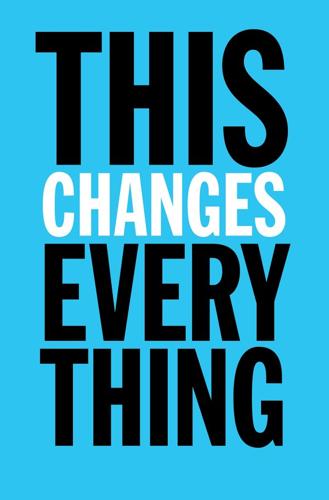
This Changes Everything: Capitalism vs. The Climate
by
Naomi Klein
Published 15 Sep 2014
He might yet stumble across a zero-carbon jet fuel, or a magic machine for safely and cheaply removing carbon from the skies. Time, however, is not on our side. David Keith, inventor of one of those carbon-sucking machines, in which Bill Gates is a key investor, estimates that the technology is still decades away from being taken to scale. “There’s no way you can do a useful amount of carbon dioxide removal in less than a third of a century or maybe half a century,” he says.65 As always with matters related to climate change, we have to keep one eye on the ticking clock—and what that clock tells us is that if we are to have a solid chance of avoiding catastrophic warming, we will need to be burning strictly minimal amounts of fossil fuels a half century from now.